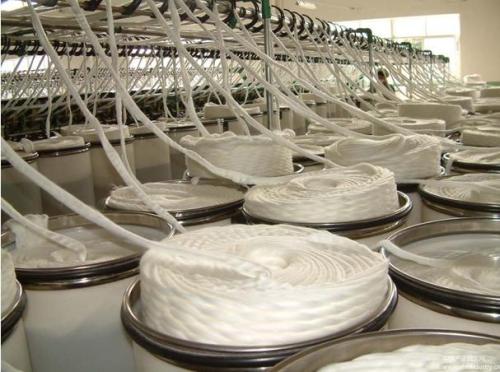Guangxi Chunyu production delay

The second session of the second session of the Guangxi Silk Industry Association was recently held in Nanning. Lan Shusi, chairman of the Guangxi Lusong Silk Industry Association, introduced the situation of the 2014 China Silk Spring Fair and discussed the current situation of silk production and operation in Guangxi and market conditions.
The conference informed the production situation of the silk industry in 2013 and the status of sericulture production in the winter and spring. In 2013, the total area of ​​mulberry gardens in the entire region was 2.66 million mu, 6.95 million kinds of seeds were produced, 271,000 tons were produced, the average purchase price was 41 yuan/kg, the output of mulberry silk was 35,400 tons, the silk fabric was 14.76 million meters, and silkworms were 310,000 pieces. The output value of the silk industry was 15.6 billion yuan, and the output of silkworm cocoon and mulberry silk continued to be the first in the country.
Since the middle and late February of this year, the region has experienced continuous low-temperature weather and the mulberry trees have been growing slowly. In some areas, saplings have been frozen and the first batch of silkworm species has been generally delayed for 15 to 20 days. As of March 25, only 10 were issued in the region. Million, compared with 590,000 shots in the same period of last year, decreased by 83%. It is expected that the listing of Chunyu will be postponed until around May 10. Participants believed that due to the delay in the production of Chunchan, many companies stated that they would continue to adjust the pace of production and use the opportunity of insufficient supply of raw materials to extend the duration of Ching Ming holiday, reduce production, and reduce raw silk inventory pressure. Reports from localities indicated that due to the high price of hail prices in the second half of last year, about 1500 mu of mulberry gardens were refurbished and planted in winter and spring. However, with the shortage of labor, sericulture costs, especially labor costs, have risen despite the increase in hail prices. To enable silkworm farmers to expand mulberry sericulture on a large scale.
Through analysis and discussion, we believe that at present, the high-end silk market is stable and has an expanding trend. High-grade raw silk is in short supply and prices are firm, while the low-end silk market is shrinking, excess production capacity, and order prices are too low; domestic consumption is interwoven with blended fabrics. The proportion is increasing, and the consumption of silk is greatly reduced. In the face of an unoptimistic business environment, everyone urged that silk enterprises in Guangxi must build confidence and remain sober-minded. According to their own actual situation, they should identify the company’s positioning, strengthen internal management, strengthen investment in technological transformation, improve product quality, and establish a brand image. . Innovate business models, differentiate risk through differentiated management and e-commerce marketing, and improve the level of business operations. Concerning the controversial fresh silk problems in the industry, the delegates advocated that production companies should improve their production processes, improve product quality, and pay attention to credit management. They hope that relevant state agencies organize experts to speed up investigations and strengthen the scientific and technological research of inspections. Scientific demonstrations are correct. Guide and promote the healthy development of the industry.
In addition, the delegates called for member units to unite to further strengthen self-discipline in the industry, avoid disorderly competition, and promote the healthy development of the silk industry in Guangxi.
The structure of the sole is quite complex. In a broad sense, it can include all the materials that make up the bottom, such as the Outsole, the midsole and the heel. In a narrow sense, it only refers to the outsole. Generally speaking, the common characteristics of sole materials should be wear-resistant, water-resistant, oil-resistant, heat-resistant, pressure resistant, impact resistant, elastic, easy to fit the foot type, not easy to change after setting, heat preservation, easy to absorb moisture, etc. at the same time, it should cooperate with the midsole, and have the brake function when walking to change the foot, not causing slipping and easy to stop, etc. There are many kinds of sole materials, which can be divided into natural and synthetic ones. Natural base materials include natural base leather, bamboo, wood, etc., while synthetic base materials include rubber, plastic, rubber plastic composite materials, recycled leather, elastic cardboard.
Outsole
Outsole Of Shoe,Black Sole Shoes,Gum Sole Shoes,Soft Sole Shoes
Jieyang City Shuangcong Plastic Products Co.,Ltd , https://www.jyshuangcong.com